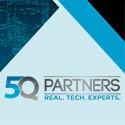Lighting Control Systems

Today’s lighting control systems can provide real-time information on space and energy utilization as well as send alerts when events occur and now even provide automated and intelligent feedback on system health.
Eaton’s LED lighting portfolio includes integrated sensors providing occupancy, daylighting and RTLS capabilities within each luminaire installed. The software systems that support these smart luminaires include capabilities for companies to better manage their spaces with space utilization, motion tracking, wayfinding and asset tracking.
Eaton who was recently named one of the leading influencers in the IoT lighting market by Navigant Research has evolved beyond tradition lighting controls to include smart building ready software and capabilities through vision, go-to market strategy and technology partners.
Eaton was able to aide a Fortune 10 achieve its targeted space utilization and defer $380,800 of real estate expenses annually. The company recently renewed the lease on its corporate headquarters and spent a significant amount of money updating and modernizing the workplace design across its campus. Many of the buildings in the campus have implemented unassigned desks and hoteling workspaces. While this feature has been well-accepted, many employees were struggling to find workspace in the office because of over-crowding. Eaton had already partnered with the company to install the lighting and controls within the spaces.
It was noticed that an entire 38,000 sq. ft. floor had low levels of occupancy, even though the business unit occupying that floor was insistent that the space was critical and very well used. The company wanted to provide a better work environment and achieve a target of 50 percent utilization on the floor.
The company, which had already installed an Eaton connected lighting LED system with installed sensors to collect data for analysis, implemented the Space application and tracked utilization data on the floor for over four months. The smart sensors collected occupancy data and tracked people’s motion patterns for space usage to develop strategies to improve utilization, while deferring yearly real estate cost.
The analysis of occupancy patterns uses real-time data collected 24/7, 365 days a year. Data is analyzed by the Space application and presented in comprehensive reports. The data is displayed in dashboards, charts and graphs that identify trends in occupancy rates and space usages, giving building operators unprecedented access to detailed occupancy information and motion patterns in real time.
In addition, the application also non-intrusively measures usage rate of individual workspaces to help flag problems including underutilized or inefficiently used areas.
Space applications can provide extensive data to help businesses manage their spaces effectively. These should include detail reports that include estimates of occupied square footage and costs by department or function. Additional vacancy reports detailing the percentage of unoccupied spaces help guide workers to unused conference or work spaces. Utilization reports should highlight low, medium and high workspace utilization information to the property manager. Graphical information displaying average and peak utilization in each area of the building over time instructs the company on seasonal trends.
The collected data surprised the company’s space planning group, noting that an average utilization was only 22 percent, far less than the targeted 50 percent utilization goal. This provided a savings opportunity of 34K sq. ft. x 28%UU x $40 = $380,800 annually.
The connected lighting system and the Space application provided accurate, detailed occupancy views and extensive utilization information. Workspace reallocation of the floor helped achieve its targeted 50 percent utilization and the company realized $380,800 yearly of deferred real estate costs. Compared to the investment made in deploying the connected lighting system, this represented a 900+ percent ROI in just the first year of implementation.
The company made small changes to open up and reconfigure the floor for on-demand workspaces.
The company is in the process of rolling out the Space application across its 30+ million sq. ft. portfolio.
This Week’s Sponsor
Read Next
 5/29/2025
5/29/2025
AI Can’t Fix Bad Data. These Ideas Can Get You on the Right Track. Real estate visionaries constantly integrate innovative technology to make their organizations more efficient.
 5/22/2025
5/22/2025
Managing Building Automation and Integration Like an Investment Portfolio What if your building automation and integration decisions were managed with the same precision, discipline, and long-term vision as Warren Buffett’s investment portfolio?
 5/15/2025
5/15/2025
Tech, Talent and Transformation: 2025 Digie Finalists Announced For 27 years, Realcomm has presented the Digie Awards to acknowledge companies, real estate projects, technologies, and individuals that have advanced the commercial real estate industry through the strategic use of technology, automation, and innovation.
 5/15/2025
5/15/2025
Empowering Space Management with Data-Driven Visualization For effective CRE space management, it’s critical to centralize lease data, maximize rental square footage (RSF), improve energy efficiency and reconfigure spaces to meet changing needs.






%20(1)%20(1)%20(1).png)





